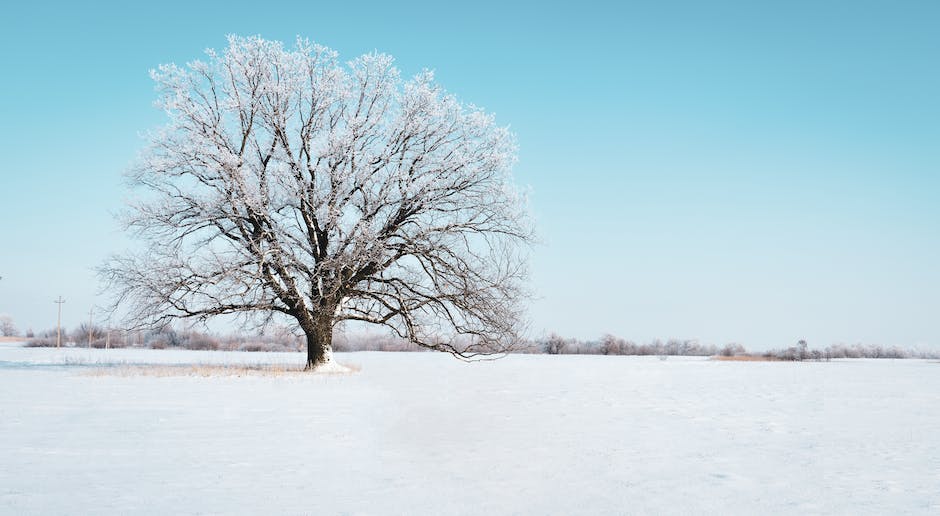Bees are among the many creatures that pollinate oak trees. Pollination is necessary for the trees to reproduce. The process of pollination occurs when the bee collects nectar and pollen from the flowers of the tree. The bee then transported the pollen to the pistil of the flower, where it fertilizes the ovules. This process results in the creation of new acorns, which are the tree’s seeds.
Bees do pollinate oak trees, but they are not the only type of Pollinating insect that can do so. wasps, flies, beetles, and moths can also pollinate oak trees.
Do bees get pollen from oak trees?
Oaks are an important tree species for many reasons, but one of the most important is their role in supporting pollinator species. As Persad notes, oaks can provide a home and food source for hundreds of different pollinator species, which in turn helps to ensure the health of ecosystems and the continued reproduction of plant life. Black oaks in particular can grow to be quite large, providing an even greater area for pollinators to take advantage of. By supporting these trees, we can help to ensure the health of our ecosystems for years to come.
Wind pollination is a process by which pollen is transported by the wind to fertilize the ovules of a plant. Many plants, including oaks, are wind pollinated. The process begins when the male flowers of a plant produce pollen. The pollen is then carried by the wind to the female flowers, where it fertilizes the ovules. The resulting acorns mature 3 months after fertilization.
Are oak trees good for pollinators
Oak trees are not only beautiful and provide shade, but they are also an important habitat for pollinators. They provide the first available food in the spring, which is essential for these creatures. We must do everything we can to protect these trees so that they can continue to thrive and support the pollinator population.
Honeydew is a type of honey that is made from nectar from trees, rather than from flowers. While most honey is made from nectar from flowers, honeydew is an exception. Honeydew is made from nectar from trees such as cork oak, oak, and other trees.
Why are bees swarming my oak tree?
When a hive gets too crowded, the bees will swarm in order to find a new location. This typically happens in the spring, but it can also happen later in the year. A group of worker bees will leave the hive with the queen in search of a new home.
Valley carpenter bees are attracted to partly deceased oak, eucalyptus, and other hardwoods, while California carpenter bees are more attracted to aromatic dwellings like incense cedars and redwood trees. Both types of bees are important pollinators in their respective regions.
Are oak trees high in pollen?
Oak trees are a common source of allergies due to the large amount of pollen they produce. The pollen from these trees is very fine and can easily be inhaled, causing allergy symptoms. If you are allergic to pollen from oak trees, be sure to avoid areas where these trees are present and take allergy medication as needed.
If you suffer from hay fever, you may want to avoid oak trees! Shedding substantial amounts of pollen that spreads via wind, oaks are commonly allergenic and may cause severe reactions. Widely distributed throughout the Northern Hemisphere, oaks produce pollen that is a major cause of hay fever (ie, allergic rhinitis) symptoms. Even if you don’t have hay fever, you may want to stay away from oak trees if you have asthma or another respiratory condition, as the pollen can exacerbate your symptoms.
Do all oak trees have pollen
If you’re dealing with oak tree allergies, you’re not alone. All members of the Quercus genus are known to produce large amounts of pollen, making both deciduous and evergreen oaks highly, to extremely, allergenic. One way of knowing when the oak trees are blooming is the appearance of yellow pollen on your car, sidewalk or pool. If you’re hoping to avoid the worst of the allergy season, pay attention to local pollen counts and try to stay inside when they’re high. And when all else fails, don’t forget the allergy medication!
Oak trees are an integral part of the urban landscape. They provide shading for houses and people, which lowers energy needs for cooling homes. Oak trees also improve air quality by storing carbon dioxide and releasing oxygen through the process of photosynthesis. Their leaves absorb airborne pollutants, making the air cleaner and healthier to breathe.
What tree attracts the most bees?
Apple and fruit trees are the most commonly known trees that attract honeybees, and the apple tree is a favorite landscaping choice. Pacific serviceberry, redbud, willow, and basswood trees are also popular with honeybees. These trees provide nectar and pollen for the bees, which in turn help to pollinate the trees’ flowers.
The Oak tree is a keystone species in many ways. They provide food and shelter for many different types of animals. They are also a keystone species in that they help to keep the ecosystem in balance.
Why are there honey bees in my oak tree
According to a recent study, the oak tree is host to a gall producing wasp. When temperatures warm up, the larvae inside the gall begin feeding on nectar produced by the galls. Honeybees and other nectar hungry critters feed on this honeydew, protecting the larvae inside from other parasitic wasps.
Oak honey is a high-nutritional value honey that is rich in antioxidants and minerals. It contains large quantities of potassium, magnesium, phosphorus, iron, and sodium. The enzymes it contains support metabolism and vital organ function. Oak honey is beneficial for the digestive system.
Do bees work oak trees?
Instead, oak trees provide a substance called manna, which is a sugar-rich excretion that drips from the leaves. This manna is especially important to bees during times when flowers are not blooming, as it provides them with a much-needed energy source.
Logan’s research focuses on a group of wasps in the family Cynipidae, which contains nearly 800 species in North America alone. Most of these species have specialized relationships with oaks, and have been using them for laying eggs and raising larva for 30 million years. The galls they create are extraordinary, many-layered and labyrinthine.
What is dripping from my oak tree
It’s interesting to note that the honeydew left from aphids chewing on oak leaves is not actually sap from the tree, but rather the excrement of the aphids. These pests essentially suck the living juice out of the leaf, and the honeydew is a by-product of their feasting. This explains why the honeydew is often seen on leaves near the ground, where aphids are more likely to congregate. While it may be unsightly, the honeydew isn’t actually harmful to the tree.
The Oak processionary moth (OPM) is a species of moth that is known for laying its eggs in large clusters on the twigs and branches of Oak trees. These clusters can contain up to 200 eggs, and they will remain over winter until they hatch as the weather warms in April. The OPM is considered to be a pest species due to the large numbers of caterpillars that it produces, which can defoliate Oak trees and cause other damage.
Do live oak trees drop pollen
As the leaves fall, live oaks produce male flowers called catkins. These catkins produce copious amounts of pollen, which can turn the tops of cars and houses yellow-green with powdery mess. This can be a nuisance for allergy sufferers.
Galls are abnormal growths of plant tissue that are caused by the presence of insects or other small organisms. Galls can be found on leaves, stems, roots, and even flowers. Most galls are harmless to the plant, but some can cause significant damage.
What insects rely on oak trees
Most of the Hairstreak butterflies and Duskywing skippers found in the United States are associated with oaks. They use the oak trees for both food and shelter. The caterpillars of other moths, aphids, treehoppers, plant bugs, lace bugs, leaf beetles and their larvae, the larvae of weevils, the larvae of wood-boring beetles, the larvae of gall wasps, the larvae of sawflies, grasshoppers, and walkingsticks also rely on the foliage of oaks for food. These oaks provide an important ecosystem service by supporting such a large population of insects.
Oak trees require a lot of wind to help them pollinate. The catkins at the tips of the branches start to release pollen before the leaves even grow. This gives the tree a better chance of being pollinated because the pollen can blow for miles in the wind.
Are oak trees male or female
Most trees are monoecious, meaning that they have both male and female flowers on the same tree. Oaks are one type of tree that exhibits this trait. Male flowers produce pollen, while female flowers produce the ovules that are fertilized by the pollen to create seeds. This arrangement allows for self-pollination, ensuring that the tree will produce offspring that are genetically similar to the parent tree.
Pruning trees can help reduce the amount of pollen in your yard because fewer branches mean fewer flowers and less pollen. Early spring is a good time to prune trees because they are not yet producing pollen for the season.
Can oak pollen make you feel sick
If you have oak tree allergies, you may experience a range of symptoms that can be mild to severe. These may include a stuffy or runny nose, sneezing, coughing, and red, watery, or itchy eyes. Some people may also experience an itchy throat or nose, fatigue, and potentially dark circles under the eyes. If you are experiencing any of these symptoms, it’s important to see an allergist to get a proper diagnosis and to find out what treatment options are available to you.
These danglers are called catkins, which are the male flower parts. They are yellowish-beige and wormlike in appearance, and are mostly on the ground.
Final Words
Bees indeed pollinate oak trees! In fact, without the help of bees, Oak trees would not be able to reproduce. The process of pollination is essential for the creation of new oak trees, and bees play a vital role in making this possible.
Bees play an important role in the pollination of oak trees. By transferring pollen from the male to the female parts of the flower, bees help to fertilize the tree, ensuring the continuation of the species. While other insects may also pollinate oak trees, bees are essential to the process and play a key role in the health of the ecosystem.
Jackson Hill is a passionate arborist with years of experience in the field of trees. He developed his fascination with trees at a young age, spending countless hours exploring the forests and climbing trees. Jackson went on to study arboriculture and horticulture at Michigan State University and later earned a degree in forestry from the University of Michigan.
With his extensive knowledge and expertise, Jackson has become a trusted authority on trees and their impact on the environment. His work has helped shape the field of arboriculture and he continues to be a leading voice in the industry.
